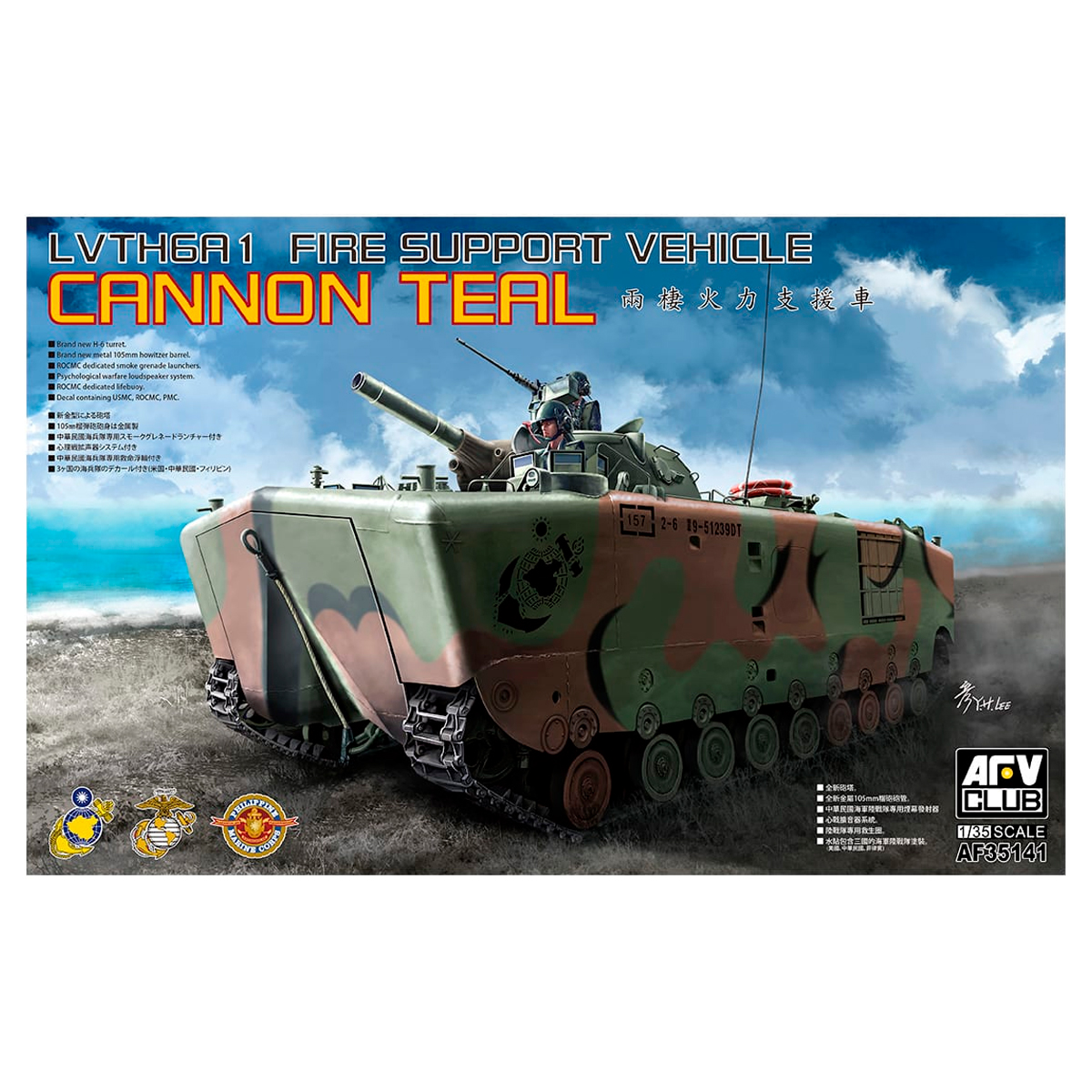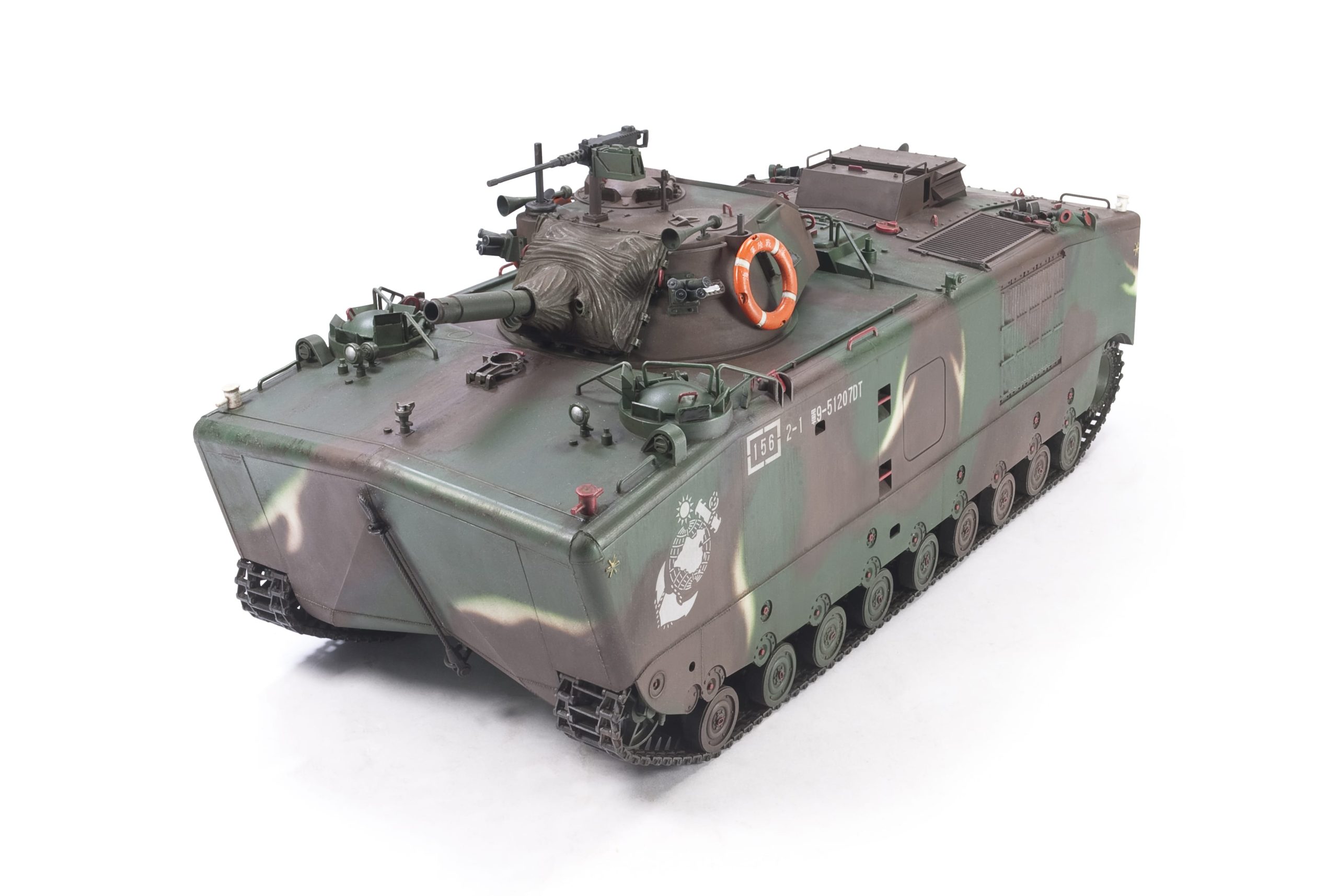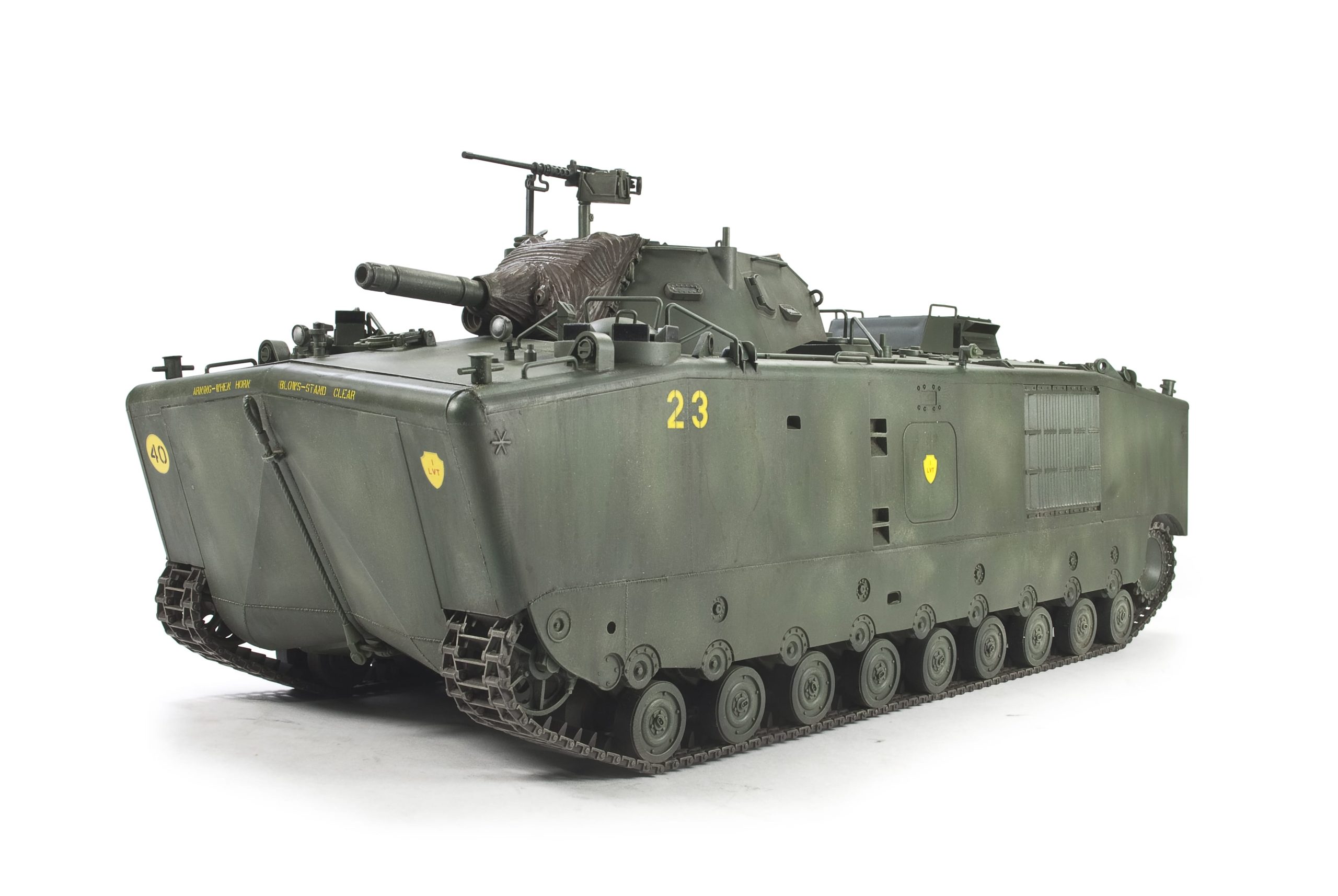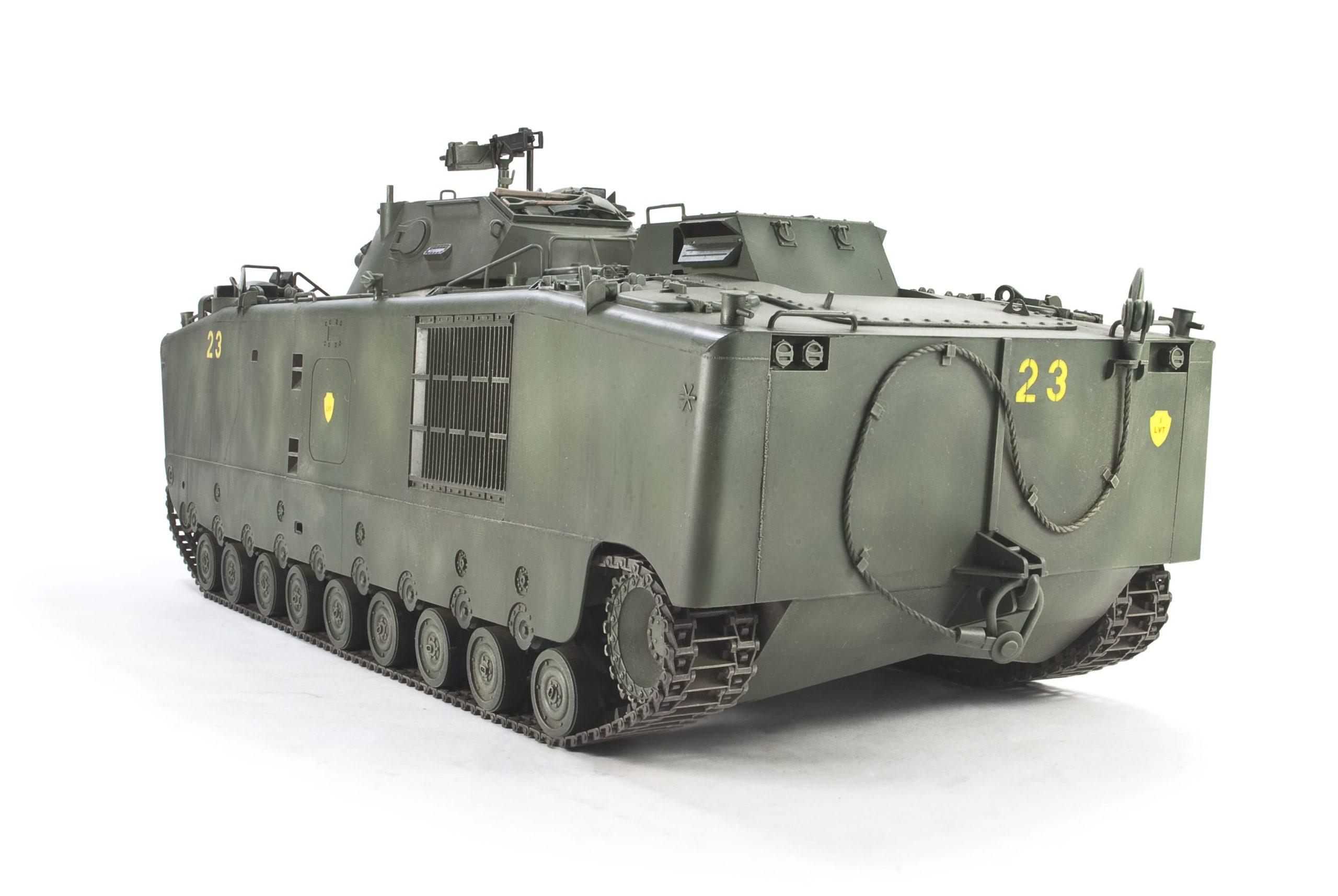LVTH6A1 FIRE SUPPORT VEHICLE 1/35
79,95€
Only 1 left in stock

*Please check our Privacy Policies to see how to we use your personal data.
*Por favor revisa nuestra Política de Privacidad para ver como tratamos tus datos personales
After the end of World War II, the US military industry ’s production capacity was released, and abundant resources were now being used to develop a more mature design to replace the same type of equipment with simple wartime structure and easy production.
Since 1946, the U.S. Navy Bureau of Ships has invited private mechanical engineering companies to propose new design solutions for tracked landing vehicles (LVT). Unlike the design of the car body that lacked armor protection during World War II, the amphibious landing vehicle designed at this time has adopted a sealed box body, followed some of the accessories from the tank, and replaced more reliable crawlers and suspension devices. However, these vehicles often face the fate of being abandoned due to factors such as weight exceeding standards, delays in development time and power transmission problems.
When the Korean War broke out in June 1950, the US military still lacked a new generation of tracked landing vehicles, and could only hurriedly modify the LVT-3 and LVT (A) -5 left over from World War II, and invested in the September Incheon landing. Combat. In December of the same year, the Bureau of Shipping commissioned Borg Warner Company to design amphibious landing vehicles. The new vehicle absorbs the results of earlier research and development, adopts the engine and transmission system that have been successfully developed on the M46 tank, and completed the manufacture of the prototype in August 1951. In order to improve the seaworthiness of the vehicle on the sea, a huge box-shaped body designed to carry 34 heavily armed soldiers was designed. It was given the LVTP5 number in 1952 and was jointly produced by five companies including FMC Corporation, and entered the US Marine Corps in 1953.
Developed at the same time as LVTP5, LVTP5’s fire support vehicle LVTH6, a turret equipped with a 24 times diameter 105 mm howitzer was installed on the same body as LVTP5. The LVTH6 is operated by seven crew members and can carry 151 shells during land sports, reducing it to 100 on the water. Entered the military service in 1957 and produced a total of 210 vehicles.
1.Brand new H-6 turret.
2.Brand new metal 105mm howitzer barrel.
3.ROCMC dedicated smoke grenade launchers.
4.Psychological warfare loudspeaker system.
5.ROCMC dedicated lifebuoy.
6.Decal containing USMC, ROCMC, PMC.
Después del final de la Segunda Guerra Mundial, se liberó la capacidad de producción de la industria militar de EE. UU., Y ahora se estaban utilizando abundantes recursos para desarrollar un diseño más maduro para reemplazar el mismo tipo de equipo con una estructura simple de guerra y una producción fácil.
Desde 1946, la Oficina de Buques de la Marina de los EE. UU. Ha invitado a empresas privadas de ingeniería mecánica a proponer nuevas soluciones de diseño para vehículos de aterrizaje con orugas (LVT). A diferencia del diseño de la carrocería del automóvil que carecía de protección blindada durante la Segunda Guerra Mundial, el vehículo de aterrizaje anfibio diseñado en este momento adoptó una caja de caja sellada, siguió algunos de los accesorios del tanque y reemplazó a los rastreadores y dispositivos de suspensión más confiables. Sin embargo, estos vehículos a menudo enfrentan el destino de ser abandonados debido a factores como el peso que excede los estándares, retrasos en el tiempo de desarrollo y problemas de transmisión de energía.
Cuando estalló la Guerra de Corea en junio de 1950, el ejército de los EE. UU. Todavía carecía de una nueva generación de vehículos de aterrizaje con seguimiento, y solo podía modificar apresuradamente el LVT-3 y el LVT (A) -5 que quedaban de la Segunda Guerra Mundial, e invirtió en el Septiembre Incheon aterrizando. Combate. En diciembre del mismo año, la Oficina de Envíos encargó a la Compañía Borg Warner que diseñara vehículos de aterrizaje anfibio. El nuevo vehículo absorbe los resultados de investigaciones y desarrollos anteriores, adopta el motor y el sistema de transmisión que se han desarrollado con éxito en el tanque M46, y completó la fabricación del prototipo en agosto de 1951. Para mejorar la navegabilidad del vehículo en el Sea, se diseñó un enorme cuerpo en forma de caja diseñado para transportar 34 soldados fuertemente armados. Se le dio el número LVTP5 en 1952 y fue producido conjuntamente por cinco compañías, incluida FMC Corporation, e ingresó al Cuerpo de Marines de los EE. UU. En 1953.
Desarrollado al mismo tiempo que LVTP5, el vehículo de apoyo contra incendios LVTP6 de LVTP5, una torreta equipada con un obús de 105 mm de diámetro 24 veces instalado en el mismo cuerpo que LVTP5. El LVTH6 es operado por siete miembros de la tripulación y puede transportar 151 proyectiles durante los deportes terrestres, reduciéndolo a 100 en el agua. Ingresó al servicio militar en 1957 y produjo un total de 210 vehículos.
1. Nueva torreta H-6.
2. Nuevo barril de obús de 105 mm de metal.
3.ROCMC lanzagranadas de humo dedicados.
4. Sistema de altavoces de guerra psicológica.
5.ROCMC salvavidas dedicado.
6. Etiqueta que contiene USMC, ROCMC, PMC.







 Request of SDS product data file / Product security
Request of SDS product data file / Product security